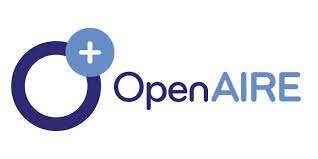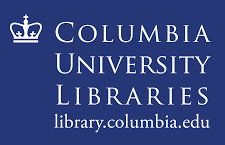Blood cholesterol and glucose levels of sheep after being given feed supplemented with Pluchea indica leaf flour
Abstract
Sheep are a type of livestock commonly consumed by the population. Lamb meat is high in cholesterol, which leads to hypercholesterolemia in individuals who consume it. The objective of this study was to assess the impact of Pluchea indica administration on cholesterol and blood glucose levels in sheep. A total of 15 sheep were divided into 4 different treatment groups. The groups were categorized according to the concentration of P. indica flour in the concentrate, specifically 0%, 2%, 4%, and 8%. The animals underwent 35-day meal therapy. The findings indicated that the inclusion of 4% P. indica flour in the concentrate resulted in a significant reduction in blood cholesterol levels in sheep (p <0.05). There was no significant difference in glucose levels between the groups (p> 0.05). The study concluded that the addition of 4% P. indica flour to the concentrate is the most effective formulation for reducing blood cholesterol levels.
Downloads
References
[BPS] Badan Pusat Statistik (ID). 2022. Produksi Daging Domba menurut Provinsi (Ton), 2019-2021 [diakses 2024 Jul 10]. https://www.bps.go.id/.
Gninkplékpo EL, Koura BI, Lesse PD, Yaoïtcha A, Accalogoun J, Hornick JL, Cabaraux JF, Houinato MR. 2024. Forage preference, voluntary intake, and in vivo digestibility of six tropical tree leaves by sheep in semi-arid areas in Benin Republic (West Africa). Sustainability. 16(6):2270. https://doi.org/10.3390/su16062270
Hatta M, Priyanto R, Mas MS, Prahesti KI. 2019. Chemical characteristic and cholesterol level of local sheep with intensive fattening. IOP Conferenc Series Earth and Environtmental Science. 247(1): 012025. https://doi.org/10.1088/1755-1315/247/1/012025
Komarudin K, Listyarini K, Budiman C, Sumantri C, Gunawan A. 2024. Polymorphism of IGFBP7 gene (g. 72351183 A>C) and its association with mineral content and cholesterol of Indonesian lamb meat. In BIO Web of Conferences 2024 (Vol. 88, p. 00038). EDP Sciences. https://doi.org/10.1051/bioconf/20248800038
Lin LY, Peng CC, Liang YJ, Yeh WT, Wang HE, Yu TH, Peng RY. 2008. Alpinia zerumbet potentially elevates high-density lipoprotein cholesterol level in hamsters. Journal of Agricultural Food Chemistry. 56(12): 4435-4443. https://doi.org/10.1021/jf800195d | PMid:18522401
Nakazawa MS, Keith B, Simon MC. 2016. Oxygen availability and metabolic adaptations. Nature Review Cancer. 16(10): 663-673. https://doi.org/10.1038/nrc.2016.84 | PMid:27658636 PMCid:PMC5546320
dos Reis BR, Wright RK, Thompson R, Tabatabai N, Amirault K, Sujani S, White RR. 2024. Glucose measurements in sheep using a long-term continuous glucose monitor designed for humans. Frontiers in Veterinary Science. 11: 1458044. https://doi.org/10.3389/fvets.2024.1458044 | PMid:39606658 PMCid:PMC11600727
Sukaryana Y, Priabudiman Y. 2014. Pengaruh pemberian ekstrak daun beluntas (Pluchea indica L) terhadap total kolesterol darah broiler. Jurnal Penelitian Pertanian Terapan 14(3): 152-157. https://doi.org/10.25181/jppt.v14i3.154
Vermeer MA, Mulder TPJ, Molhuizen HOF. 2008. Theaflavins from black tea, especially theaflavin-3-gallate, reduce the incorporation of cholesterol into mixed micelles. Journal Agricultural and Food Chem-istry. 56(24): 12031-12036. https://doi.org/10.1021/jf8022035 | PMid:19049290
Widiyanto W, Mulyono M, Prasetiyono BW. 2023. Supplementation with protected kapok seed oil and choline chloride to improve the performance and lipid status of thin-tailed sheep. Veterinary World. 16(7):1520. https://doi.org/10.14202/vetworld.2023.1520-1526 | PMid:37621540 PMCid:PMC10446730

Copyright (c) 2025 CC-BY-SA

This work is licensed under a Creative Commons Attribution-ShareAlike 4.0 International License.
Authors who publish with this journal agree to the following terms:
1. Authors retain copyright and grant the journal right of first publication with the work simultaneously licensed under a Creative Commons Attribution License that allows others to share the work with an acknowledgement of the work's authorship and initial publication in this journal.
2. Authors are able to enter into separate, additional contractual arrangements for the non-exclusive distribution of the journal's published version of the work (e.g., post it to an institutional repository or publish it in a book), with an acknowledgement of its initial publication in this journal.
3. Authors are permitted and encouraged to post their work online (e.g., in institutional repositories or on their website) prior to and during the submission process, as it can lead to productive exchanges, as well as earlier and greater citation of published work (See The Effect of Open Access).

.jpg)
















